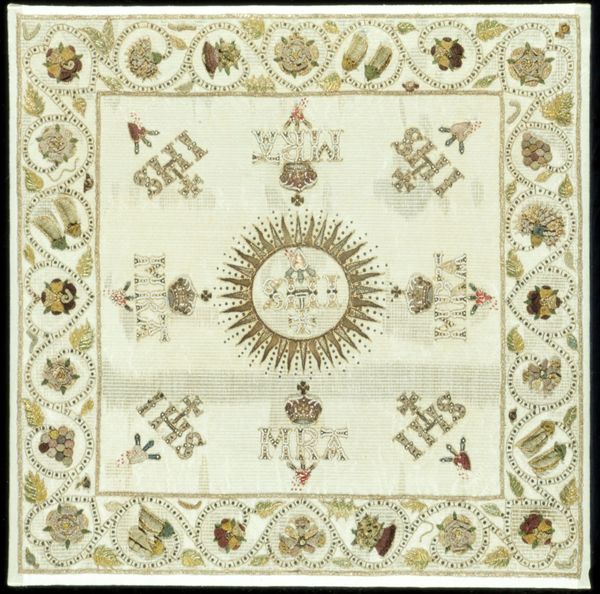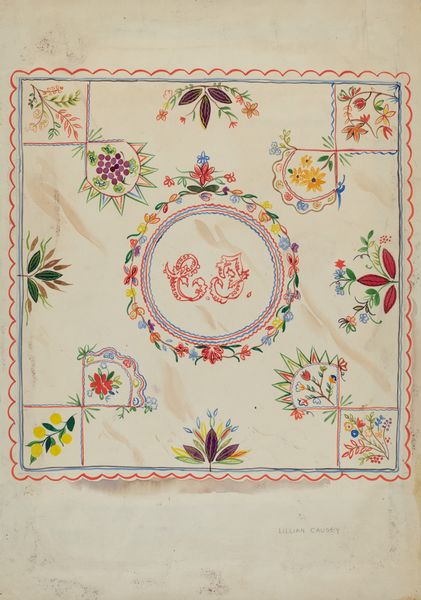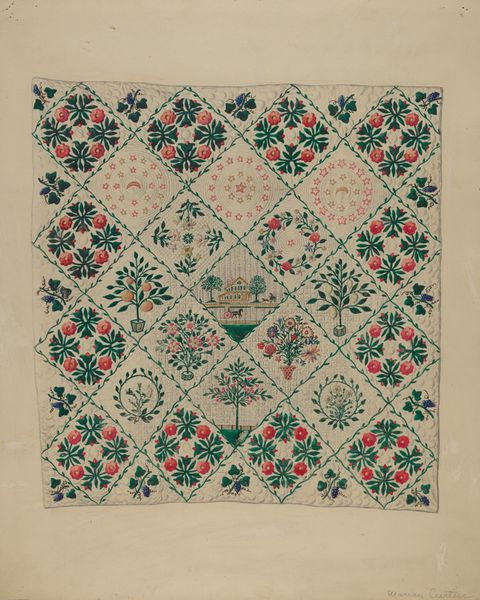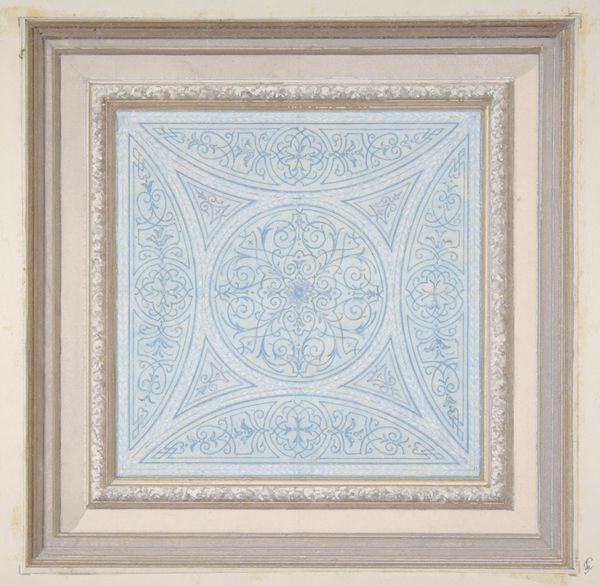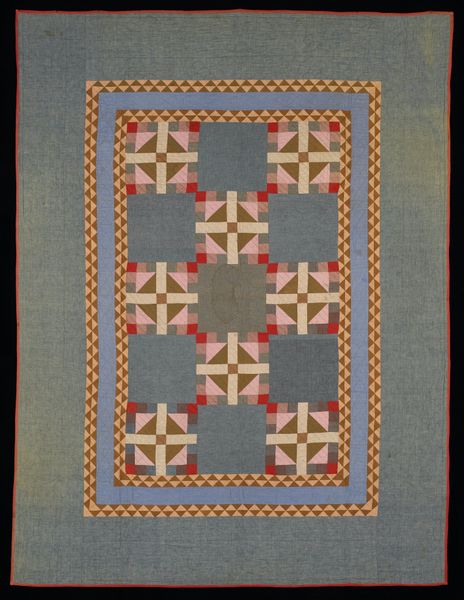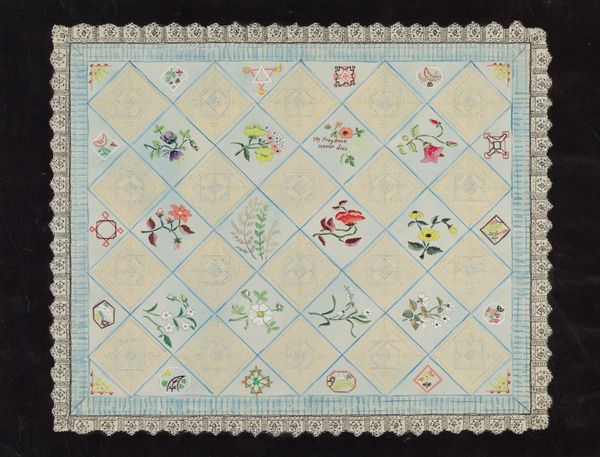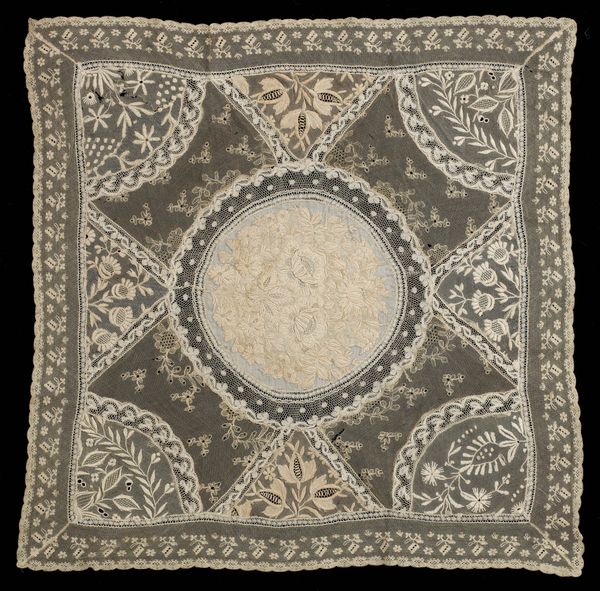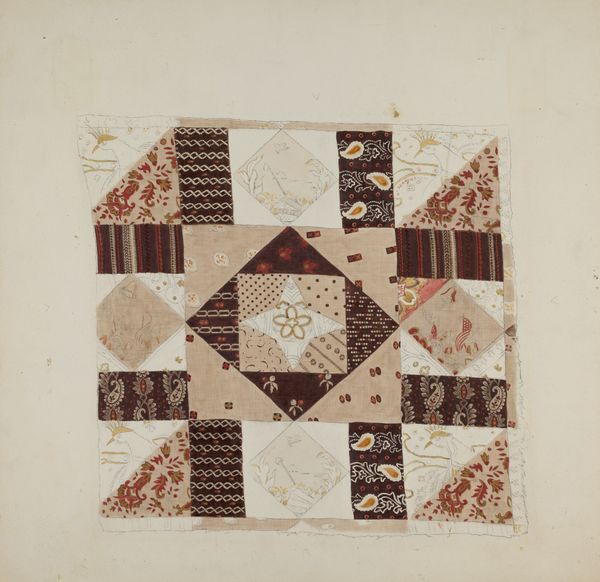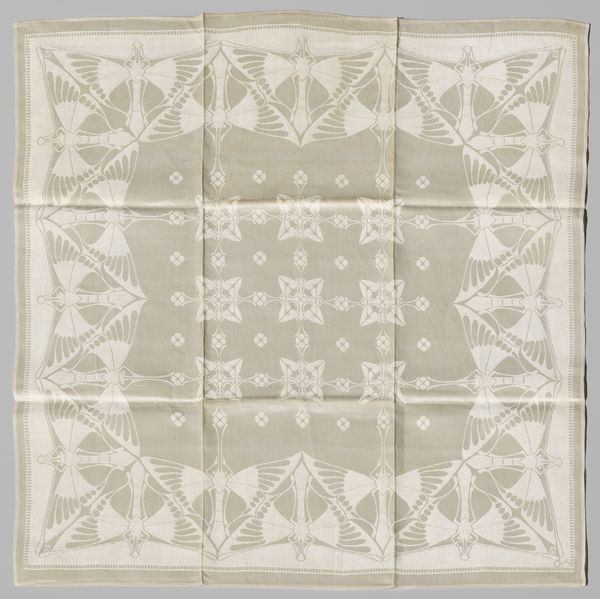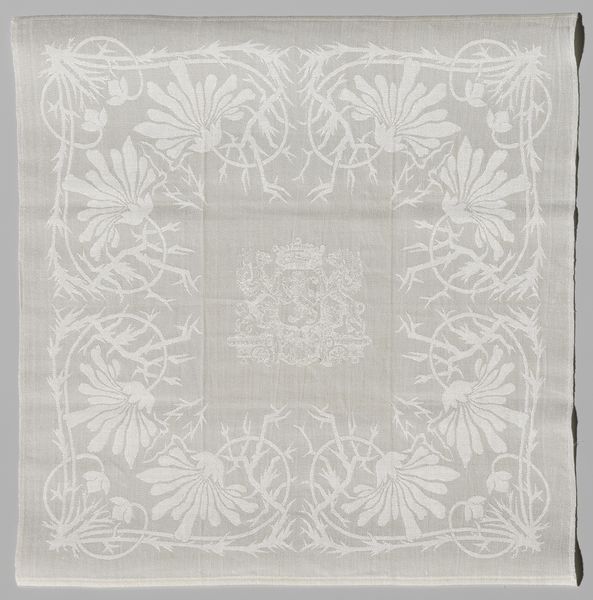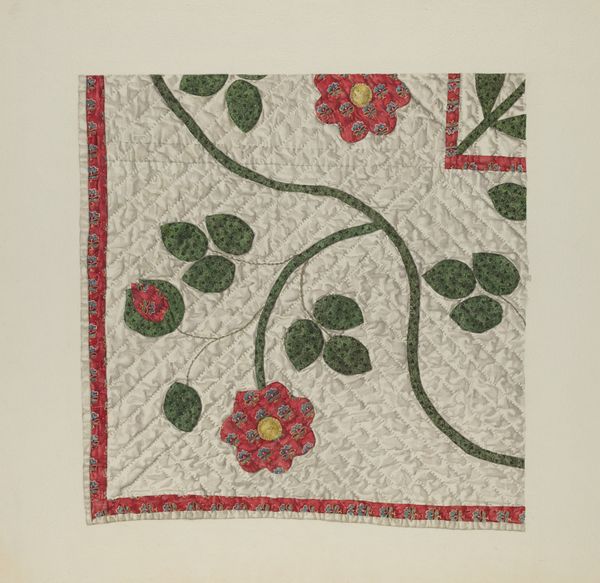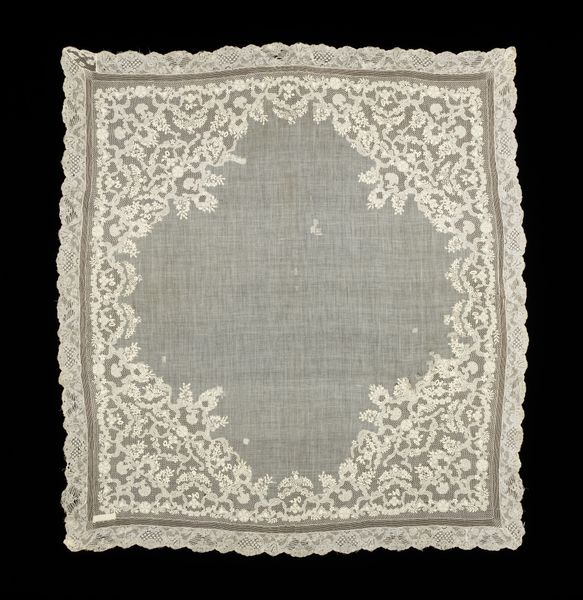
panel, textile, cotton
#
panel
#
textile
#
geometric pattern
#
ethnic pattern
#
geometric
#
cotton
#
islamic-art
Dimensions: 34 x 33 1/2 in. (86.36 x 85.1 cm)
Copyright: Public Domain
Curator: Welcome. We are looking at an embroidered Panel, dating to around the 20th century, currently residing here at the Minneapolis Institute of Art. It is composed of cotton textile. Editor: It's deceptively simple at first glance, isn’t it? The geometric order, the precise stitching… It gives off a cool, almost clinical vibe, until you start to consider the human hours involved in its making. Curator: Precisely! The panel reflects complex cross-cultural exchanges, fitting squarely into broader patterns of Islamic art as well. Works like this often blur those rigid categorizations. Editor: Tell me more about the labor and materiality. Is it a handmade item or do you think it comes from a production? Curator: What stands out to me is how this piece negotiates the tension between traditional craftsmanship and the burgeoning textile industry of its time. It is unclear how much it was handmade versus a more standard form of production. Editor: Right, and that’s where things get really interesting. Considering its potential use - say as a simple wall hanging versus as a cover for an object, you start questioning our relationship to these handmade items. And how labor practices and social values intertwine, all on the cotton surface of the cloth. Curator: Yes, and who gets to determine the meaning, or significance of such textiles. It raises fundamental questions about taste, authenticity, and power relations embedded within our collecting and display practices. Editor: It makes you wonder if the intended audience, or purchaser, understood the nuances and implications woven within. There is an entire hidden economy attached to textile manufacturing as well, wouldn't you agree? Curator: Absolutely, this seemingly modest piece offers such a complex view of global economics in the 20th century and questions regarding display, cultural appropriation, value, and even beauty. Editor: For me, it reveals how a textile such as this becomes much more than merely threads. I'll be leaving today to ponder this piece again soon!
Comments
No comments
Be the first to comment and join the conversation on the ultimate creative platform.
